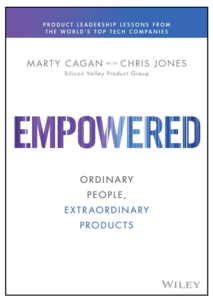Introduction
Hey there! If you’ve been dreaming about transitioning into a product manager role, brimming with passion but unsure where to start, this guide is your golden ticket. Imagine turning that burning passion into your position, steering innovative products from idea to launch. It’s a journey, sure, but with the right map, you’ll get there, navigating the exciting world of product management with confidence and flair. Ready to dive in? Let’s set sail on this adventure together!
Understanding the Role of a Product Manager
Product Management is like being the captain of a ship, steering the product through the turbulent sea of market demands, technological changes, and team dynamics. It’s all about vision, execution, and leadership. As a product manager, you’re the voice of the product, harmonizing the efforts of different teams to ensure that the end product delights users while meeting business goals.
The Growing Demand for Product Managers
In today’s rapidly evolving digital world, the demand for product managers is skyrocketing. Businesses, big and small, recognize the pivotal role product managers play in driving innovation and achieving strategic objectives. It’s a career path ripe with opportunities for those ready to embrace the challenge.
Setting the Stage for a Successful Transition
Transitioning into product management doesn’t happen overnight. It requires thoughtful preparation and a willingness to immerse oneself in the multifaceted world of product development. But fear not! The journey is as rewarding as the destination.
Getting to Know the Realm of Product Management
The Core Responsibilities of a Product Manager
- Vision and Strategy Setting: Crafting a compelling vision and setting a clear strategy for the product.
- Prioritization and Decision Making: Deciding what features to build and what to sideline, ensuring resources are optimally utilized.
- Cross-functional Leadership: Leading and aligning cross-functional teams without direct authority.
Essential Skills for Product Management
- Communication and Collaboration: Articulating ideas clearly and fostering teamwork.
- Analytical and Problem-Solving Skills: Crunching numbers and navigating through complex problems to find solutions.
- User Experience and Market Understanding: Knowing your users and market inside out to make informed decisions.
Comparing with Other Roles: How Product Management Stands Out
Product Manager vs. Project Manager
While project managers focus on the ‘how’ and ‘when’ of executing projects, product managers are concerned with the ‘what’ and ‘why’ behind the product.
Product Manager vs. Product Owner
Product owners usually work within the Scrum framework focusing on backlog management, while product managers have a broader role, encompassing strategy, vision, and user understanding.
Product Manager vs. Marketing Manager
Though both roles require market understanding, marketing managers focus on promoting the product, while product managers oversee the entire lifecycle, from conception to launch.
Laying the Groundwork for Your Transition
Evaluating Your Current Skills and Experience
Take a good look at where you stand today. What skills do you bring to the table? How does your experience align with product management?
Identifying Transferable Skills
You might be surprised at how many of your current skills are transferable. Good at problem-solving? Great at communication? These are gold in product management.
Assessing Gaps and Areas for Improvement
Be honest about where you need to beef up your skills. Maybe it’s gaining a deeper understanding of UX or getting better at data analysis.
Learning and Development Pathways
Formal Education and Online Courses
There’s a plethora of online courses and certifications that can give you a solid foundation in product management principles.
Self-directed Learning and Mentorship
Read widely, from blog posts to books. Find a mentor who can guide you through the nuances of the role.
Staying Updated with Industry Trends
Follow thought leaders on social media, subscribe to newsletters, and join webinars to keep your finger on the pulse of the industry.
Building Your Product Management Portfolio
Side Projects and Volunteer Work
Got an app idea? Work on it. Volunteer for product-related roles in community organizations or start-ups. It’s all grist for the mill.
Case Studies and Problem-solving Scenarios
Analyze existing products, identifying strengths and weaknesses. How would you improve them? Document your thoughts and solutions.
Online Presence: Blogging and Social Media Contributions
Share your insights and learnings. Engaging in online product management communities can increase your visibility and credibility.
Making Your Move: Practical Steps to Transition into a Product Management Role
Networking and Building Relationships in the Product Community
Attend local meetups, join online forums, and connect with product managers on LinkedIn. Don’t be shy to reach out for advice or informational interviews.
Attend Product Management Conferences and Workshops
These are goldmines for learning and networking. Plus, they can be incredibly inspiring.
Engage with Product Management Groups and Forums Online
Participate in discussions, ask questions, and share your views. It’s a great way to learn and get noticed.
Reach Out to Current Product Managers for Insights and Advice
Most product managers love to share their knowledge. Ask for a coffee chat or a short meeting to glean insights from their experiences.
Tailoring Your Resume and Cover Letter for Product Management
Highlighting Relevant Skills and Experiences
Make sure to tailor your resume to showcase how your skills translate into product management competencies.
Making a Case for Your Unique Perspective
Your unique background can bring a fresh perspective. Highlight how this can be an asset in your cover letter.
Crafting a Narrative That Connects Your Background to Product Management
Tell your story in a way that draws a clear line from where you’ve been to where you want to go – into product management.
Acing the Product Manager Interview
Understanding Common Interview Formats and Questions
Familiarize yourself with the typical structure of product manager interviews and the sorts of questions that are usually asked.
Preparing Your Case Studies and Portfolio Presentation
Have your portfolio ready to showcase your best work, including any side projects, volunteer work, or case studies you’ve worked on.
Demonstrating Your Strategic Thinking and User-Centric Approach
Be ready to discuss how you approach product strategy and make decisions with the user in mind.
Stepping into Your New Role as a Product Manager
Embracing Continuous Learning and Growth
Product management is an ever-evolving field. Stay curious and open to new ideas and skills.
Seeking Feedback and Embracing Failures
Feedback is a gift, and failures are stepping stones to success. Embrace both with open arms.
Pursuing Ongoing Training and Development
Never stop learning. Whether it’s new methodologies, tools, or soft skills, there’s always something to add to your arsenal.
Navigating Your First 90 Days
Start strong by focusing on understanding your team, the product, and the customers. Look for quick wins while setting the stage for longer-term goals.
Looking Ahead: Career Advancement and Opportunities
Product management can open numerous doors. From advancing to senior roles to exploring entrepreneurial paths, the sky’s the limit.
Conclusion
Transitioning into product management is a journey of learning, adaptation, and growth. It takes passion, persistence, and a plan. Every step you take brings you closer to that coveted product manager position. Dig deep, stay curious, and let your passion light the way. Here’s to your success in navigating this exciting path!
FAQs
What if I have no experience in Product Management?
Start building your experience through side projects, volunteer work, and by leveraging your transferable skills.
Can someone from a non-technical background become a Product Manager?
Absolutely! While technical skills are beneficial, product management also heavily relies on soft skills like leadership, communication, and problem-solving.
How long does it typically take to transition into a Product Management role?
The timeline varies based on individual efforts, existing skills, and opportunities. It could take anywhere from a few months to a couple of years.
What are some common challenges newcomers face in Product Management?
Navigating cross-functional dynamics, prioritization, and balancing user needs with business goals are common hurdles.
Are there any specific industries or companies that are ideal for budding Product Managers?
Tech companies often have the most visible product management roles, but opportunities exist across industries. Focus on companies that align with your interests and values.
Image credit: https://www.pexels.com/photo/concentrated-male-entrepreneur-analyzing-project-standing-near-whiteboard-in-modern-workspace-4463588/



